Unscripted: A Survival Guide to Indian Roads
Part improv. Part leap of faith. Part street theatre.
Welcome to the Madness
They say you only understand the value of life after a near-death experience. In India, that moment arrives every five minutes, usually while crossing the street.
Step onto an Indian road, and you are immediately thrust into a sensory overload. Honks blare in every direction, rickshaws zip through gaps no human eye could perceive, scooters perform death-defying stunts between cars, and somewhere in the middle of it all, a cow strolls with the casual confidence of a VIP.
Pedestrians cross wherever and whenever they please, chai stalls line the sidewalks, and the aroma of frying samosas mingles with the faint, ever-present scent of pollution. Occasionally, a fresh breeze carries the fragrance of mint and coriander, but before you can relish it, the next gust delivers a sulfuric slap from the city.
Somehow, this chaotic ballet works, mostly. Just when you start to believe there’s some divine order keeping everything in place, a cricket ball whizzes past your head. A team of boys emerges from an alley, darting through traffic to retrieve their prized possession before vanishing back into their makeshift cricket pitch.
I’m Sarah—someone standing at the edge of university life, with a camera, some scraps of inspiration, and a head full of stories. If you're into design, writing, or figuring things out as you go, I’d love your company (and your feedback!) on this unfolding journey.
Meanwhile, a cyclist, lacking space on the road, expertly balances himself on the side-view mirror of a luxury car, oblivious to the fact that the mirror alone costs several thousand dollars. Mr. Rich, inside his fancy vehicle, is moments away from combusting with rage, but before his anger can materialize, our acrobatic hero has already launched himself off with a well-timed push, catapulting into the next available gap in traffic, the luxury mirror providing the necessary momentum for his take-off.
And yet, despite the chaos, accidents seem far less frequent than in the West. In Canada, where we have wide, orderly lanes, traffic signals, and strict regulations, collisions are surprisingly common. In 2023 alone, Ontario recorded 568 fatal crashes and 26,425 injury-causing collisions. Meanwhile, in India, where a single lane somehow accommodates nose-to-nose cars, weaving motorcycles, rickshaws, fearless pedestrians, and the occasional cow, the sheer lack of crashes feels like a statistical impossibility.
Of course, it’s worth noting that not all incidents are reported in the same way. India’s traffic system is layered, formal in some areas, informal in others. But what's undeniable is the remarkable adaptability of people. They read the flow of traffic like jazz musicians reading each other’s rhythms, intuitively, instantly, and often invisibly.
Welcome to driving in India. It’s not traffic; it’s an unscripted action movie.
Honk First, Think Later
Forget traffic rules. The real communication here happens through honking. It’s an entire language, one you’ll quickly learn to decode. A quick beep means, "Excuse me." A long honk translates to "MOVE IT!" And then there's the musical honk, which serves no practical purpose other than an auto-rickshaw driver showing off. Have horn. Will honk.
Then there’s the iconic truck message: Horn OK Please. What does it mean? No one knows. You realize after a while that this isn’t dysfunction, it’s improvisational genius. In places where formal systems lag, people create informal ones. Honking isn’t just noise; it’s participation in a live negotiation. The chaos isn’t the failure of the system; it is the system. One powered by resourcefulness, quick thinking, and sheer human resilience.
If necessity is the mother of invention, then the Indian road is where necessity thrives. You’ll see a family of seven balancing on a single motorcycle, an engineering marvel in itself. No helmets, just pure skill. Then there’s a version of the pickup truck, lovingly called the Tempo, that has transcended its original function, now repurposed as a convertible, brimming with sacks of produce, and featuring a man perched regally on top like royalty surveying his land.
The rickshaw, an iconic symbol of Indian streets, is equal parts transportation and rollercoaster. Hold on tight because there’s a high chance your driver is taking every shortcut imaginable, some of which may involve sidewalks or market lanes. Buckle up (just kidding, there are no seat belts).
And let’s not forget the true VIPs of the road, cows and dogs. Traffic halts for them, and they are fully aware of their power. They will sit in the middle of an intersection without a care in the world while everyone else is left to maneuver around them.

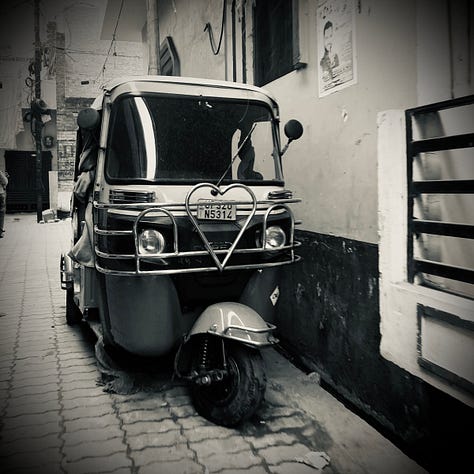
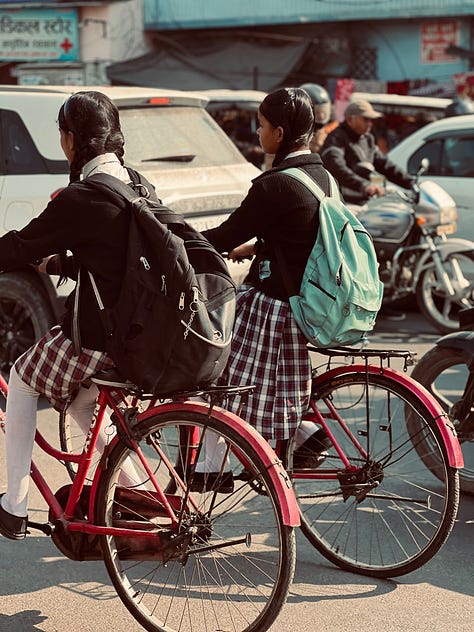
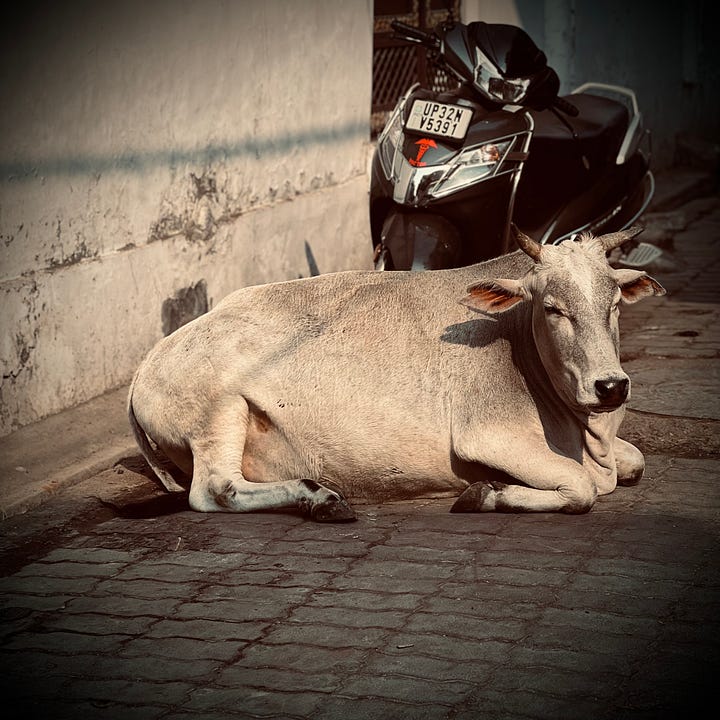
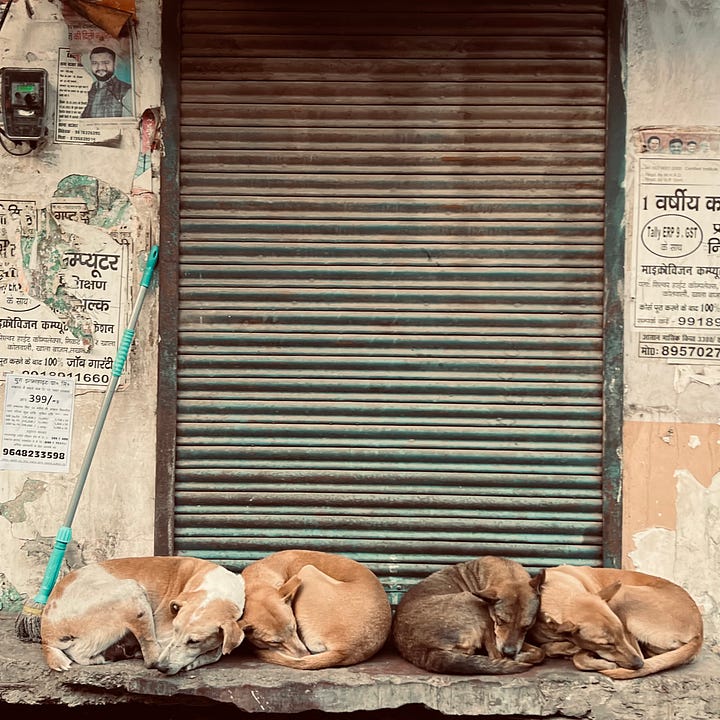
The Pedestrian: King of the Road
The pedestrian in India fears nothing. He steps onto the road, raises a hand, and assumes divine intervention will halt incoming traffic. And the best part? It usually does.
Crossing the road here is a test of skill, faith, and sheer luck. You either become one with the rhythm or stand frozen on the sidewalk forever.
Every time my mother announces, “We’re going shopping,” my inner monologue begins: Do I want to step into this cauldron of chaos?
The answer is always yes, because no other experience compares. My aunts, meanwhile, find my dramatics hilarious. I clutch their hands with a death grip as we cross the road, convinced this is my last moment on Earth. A rickshaw screeches two centimeters from my toes, and my screeches match its pitch. But I survived. Every time. Traumatized? Slightly. Entertained? Massively.
Underneath their laughter is something I admire deeply: a lived wisdom about movement, risk, and trust. They’ve navigated this chaos their whole lives, not just physically but emotionally. What feels like madness to me is muscle memory to them.
Survival Is a Story
For all its madness, there’s something exhilarating about it. The chai stalls, the roadside dhabas, the impromptu street snacks, every trip, no matter how chaotic, comes with its rewards.


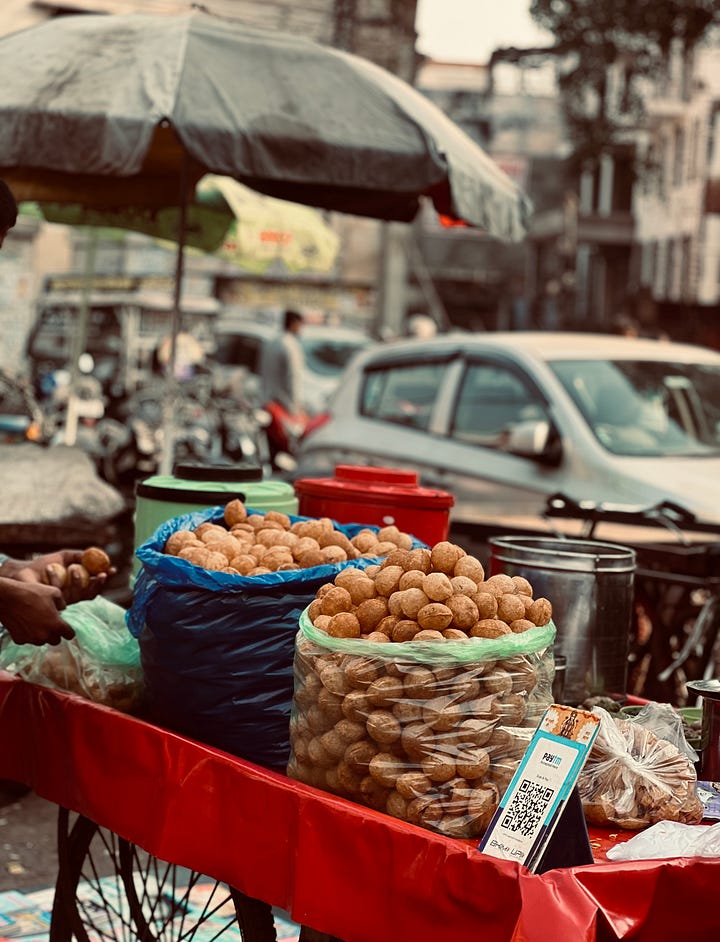
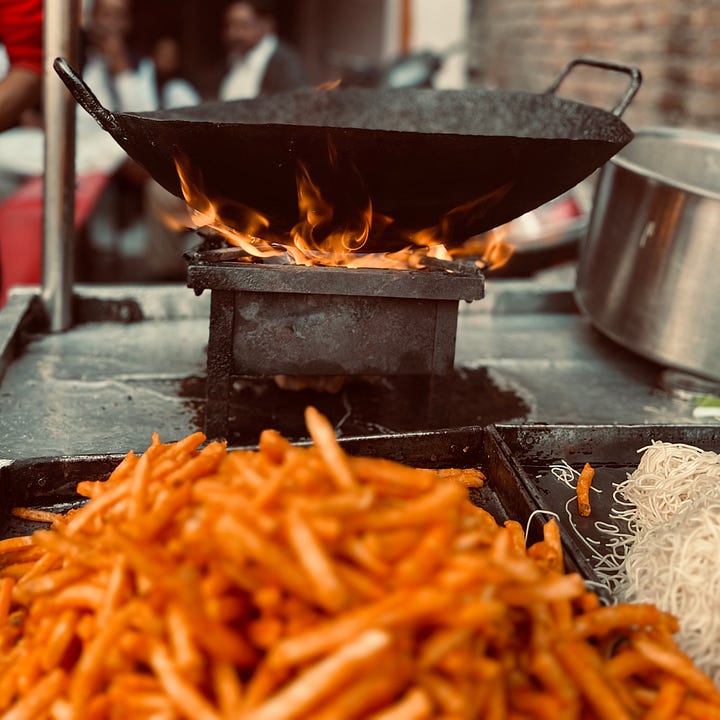
Maybe that’s what makes it addictive: the way it demands your full attention. In a world that’s often numbing and hyper-scheduled, Indian roads force presence. You don’t scroll your phone here. You scan, dodge, react. It’s terrifying, yes, but also oddly freeing.
And making it to your destination in one piece? That’s an achievement worth celebrating.
In India, you don’t just drive, you survive, you experience, and you walk away with a story every single time.
Sure, the walls are free real estate for every “Lose Weight Fast” ad in the universe, and someone will probably stick a new poster right over yours within hours. You’ll also pass a massive ‘DO NOT URINATE HERE’ sign strategically placed on a wall that looks like it’s seen better (and wetter) days. And yet, despite everything, there is a rhythm to the chaos. A strange harmony in the honking, the weaving, the halting, the hurtling. And somehow, it just works.
And just when you think you've seen it all, there he is, the traffic cop, the man meant to bring order, the guardian of the streets. Or rather, the guardian of his afternoon nap.
Fast asleep. Leaning against his baton. Slouched in a plastic chair. Unbothered.
He has no need for a white noise app, the symphony of honks, rickshaws, and shouting vendors provides all the background sound he could ever need.
And honestly? After everything you’ve witnessed... can you really blame him?
If you liked this, here are some other attempts at humour that you might enjoy:
How One Dish Took Over the World While the Rest of Indian Cuisine Watched in Silence
You. Are. A Very. Talented. Individual.
How my parents realized their six-year-old had been running a one-year-long con.
A Love Letter to Chai—Before the West Drowned It in Syrup
Thank you for reading all the way through—it means more than you know. If you felt something, learned something, or even just want to help me get better at this whole writing-and-designing-my-way-through-life thing, I’d love for you to subscribe, share a thought, or leave a gentle critique. Every bit of feedback helps me grow.


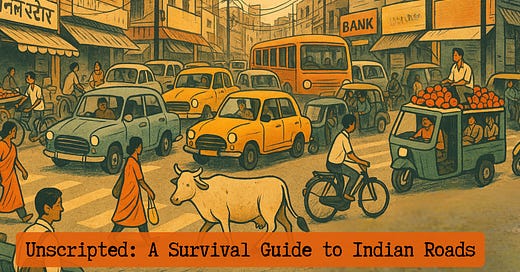

![Sarah [Pixels & Paragraphs]'s avatar](https://substackcdn.com/image/fetch/$s_!Kr_J!,w_36,h_36,c_fill,f_auto,q_auto:good,fl_progressive:steep/https%3A%2F%2Fsubstack-post-media.s3.amazonaws.com%2Fpublic%2Fimages%2Fa818115e-a0ee-4e93-9415-302b137a72dd_500x500.png)

Stunning narration both through your words and photographs. Loved how you talk about the OG honking language & how our animal friends rule the road! 🙌🏽🌻
Love the humor😊